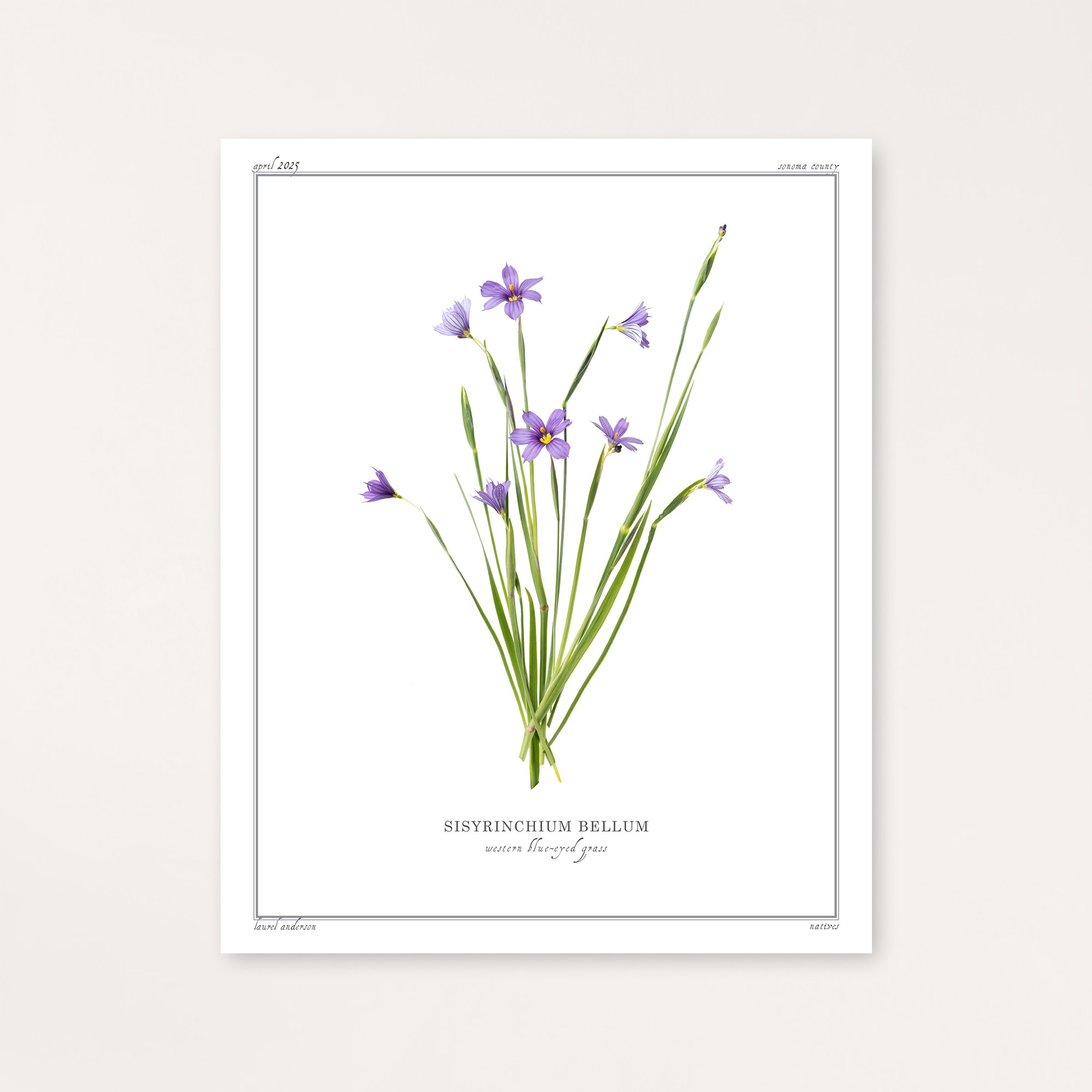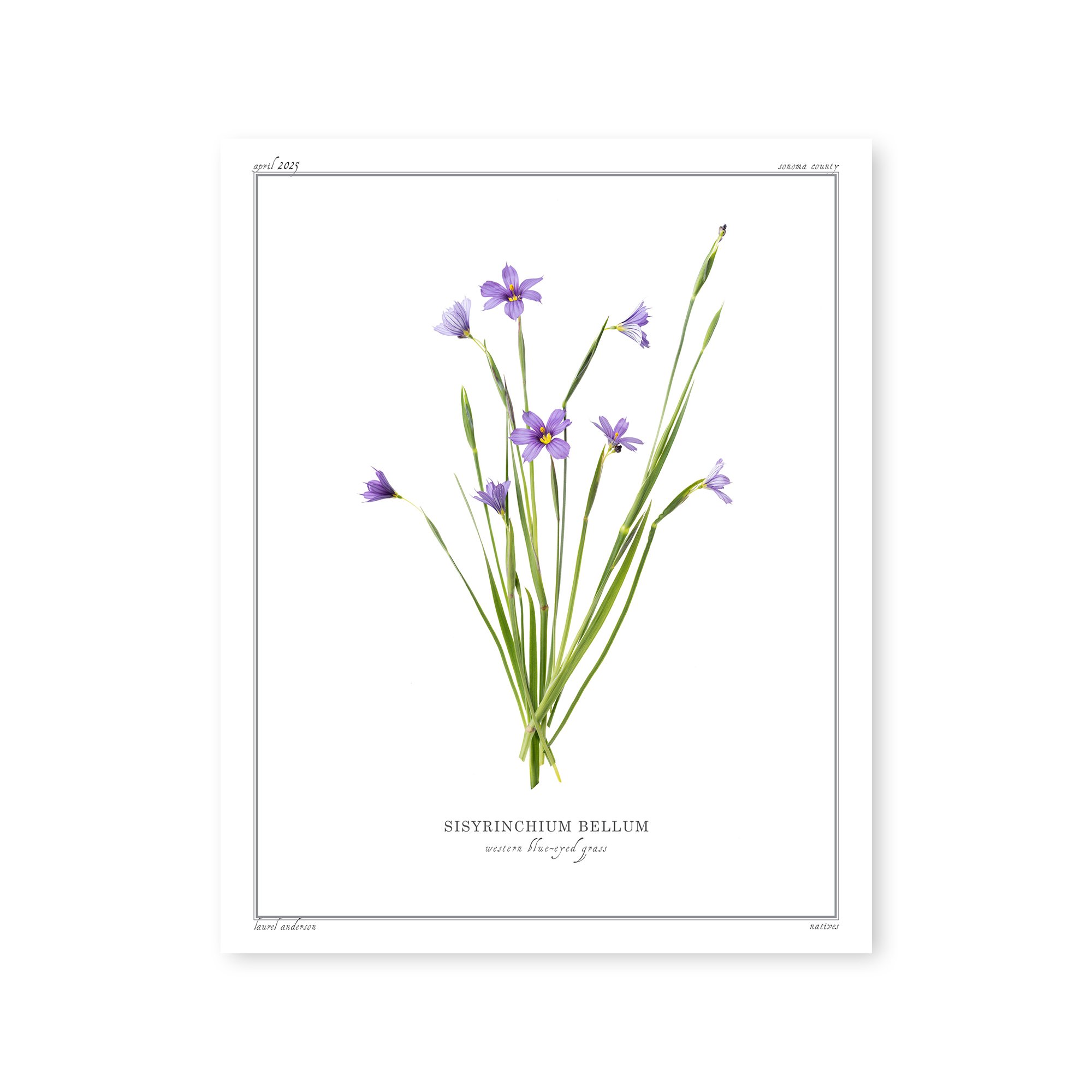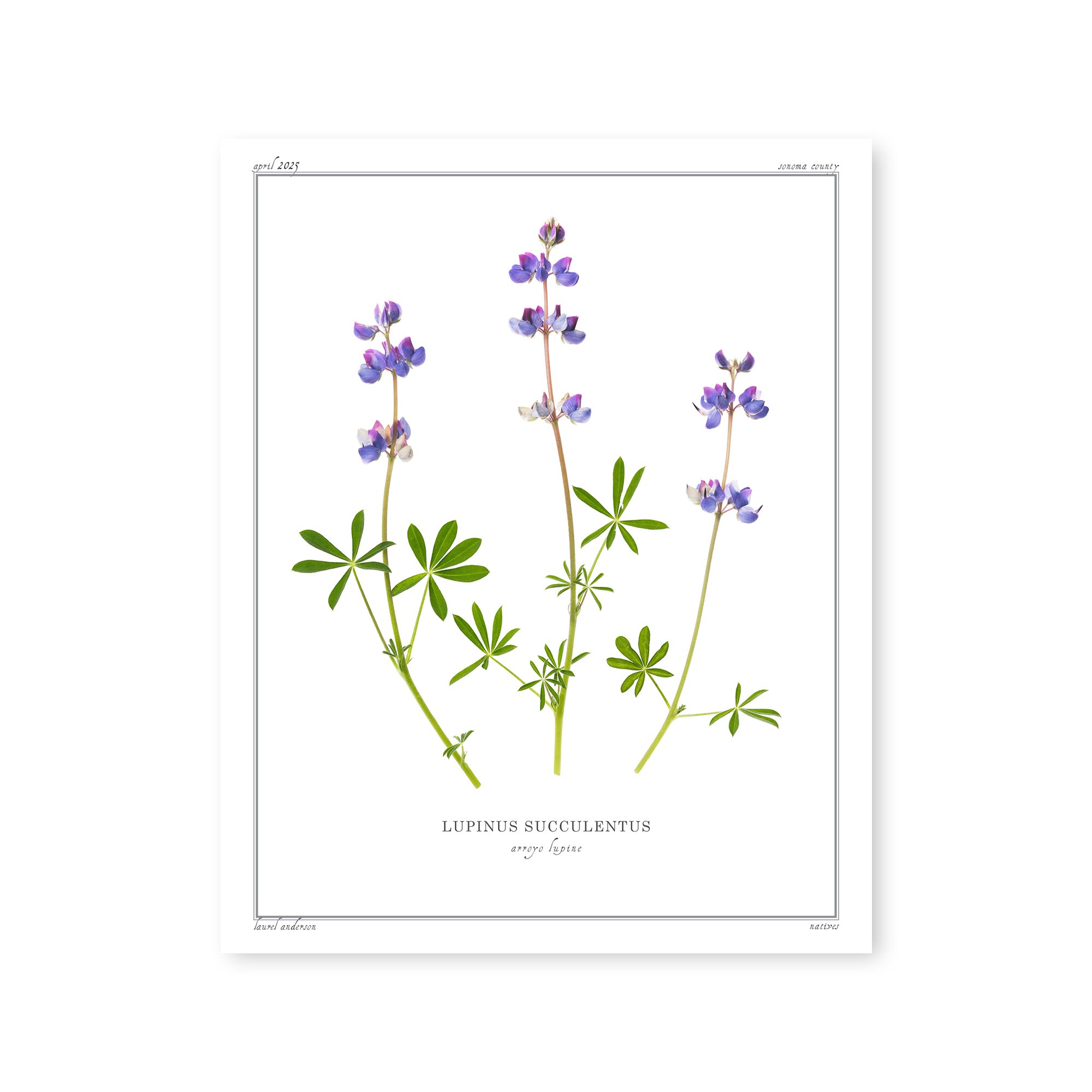 Image 1 of 2
Image 1 of 2

 Image 2 of 2
Image 2 of 2



Western Blue-eyed Grass
Blue-eyed Grass, Sisyrinchium bellum, grows throughout California in open, moist areas and woodlands, reaching altitudes up to 8,000 feet.
This adaptable plant plays an important ecological role in California's native landscapes, providing nectar for bees and other pollinators. Its ability to self-seed helps it establish colonies in meadows and grasslands, contributing to the biodiversity of these ecosystems. The Ohlone people utilized this plant medicinally, preparing an infusion of the roots and leaves to treat indigestion and stomach pain.
Each print is made by the artist using archival quality pigment ink on Moab's Entrada Rag Bright 300 paper.
Blue-eyed Grass, Sisyrinchium bellum, grows throughout California in open, moist areas and woodlands, reaching altitudes up to 8,000 feet.
This adaptable plant plays an important ecological role in California's native landscapes, providing nectar for bees and other pollinators. Its ability to self-seed helps it establish colonies in meadows and grasslands, contributing to the biodiversity of these ecosystems. The Ohlone people utilized this plant medicinally, preparing an infusion of the roots and leaves to treat indigestion and stomach pain.
Each print is made by the artist using archival quality pigment ink on Moab's Entrada Rag Bright 300 paper.










